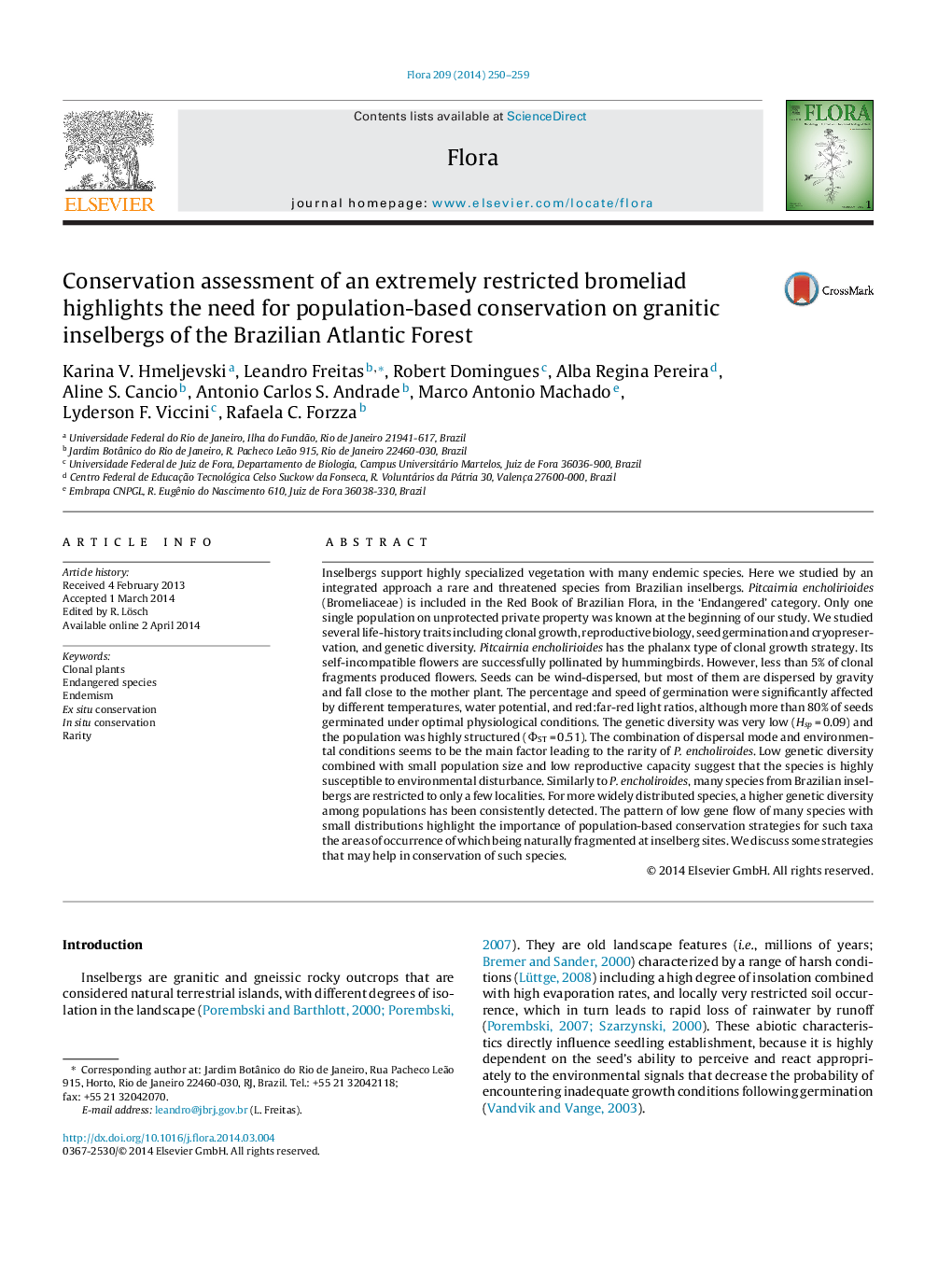| Article ID | Journal | Published Year | Pages | File Type |
|---|---|---|---|---|
| 2179551 | Flora - Morphology, Distribution, Functional Ecology of Plants | 2014 | 10 Pages |
Abstract
Inselbergs support highly specialized vegetation with many endemic species. Here we studied by an integrated approach a rare and threatened species from Brazilian inselbergs. Pitcairnia encholirioides (Bromeliaceae) is included in the Red Book of Brazilian Flora, in the 'Endangered' category. Only one single population on unprotected private property was known at the beginning of our study. We studied several life-history traits including clonal growth, reproductive biology, seed germination and cryopreservation, and genetic diversity. Pitcairnia encholirioides has the phalanx type of clonal growth strategy. Its self-incompatible flowers are successfully pollinated by hummingbirds. However, less than 5% of clonal fragments produced flowers. Seeds can be wind-dispersed, but most of them are dispersed by gravity and fall close to the mother plant. The percentage and speed of germination were significantly affected by different temperatures, water potential, and red:far-red light ratios, although more than 80% of seeds germinated under optimal physiological conditions. The genetic diversity was very low (Hsp = 0.09) and the population was highly structured (ΦST = 0.51). The combination of dispersal mode and environmental conditions seems to be the main factor leading to the rarity of P. encholiroides. Low genetic diversity combined with small population size and low reproductive capacity suggest that the species is highly susceptible to environmental disturbance. Similarly to P. encholiroides, many species from Brazilian inselbergs are restricted to only a few localities. For more widely distributed species, a higher genetic diversity among populations has been consistently detected. The pattern of low gene flow of many species with small distributions highlight the importance of population-based conservation strategies for such taxa the areas of occurrence of which being naturally fragmented at inselberg sites. We discuss some strategies that may help in conservation of such species.
Related Topics
Life Sciences
Agricultural and Biological Sciences
Ecology, Evolution, Behavior and Systematics
Authors
Karina V. Hmeljevski, Leandro Freitas, Robert Domingues, Alba Regina Pereira, Aline S. Cancio, Antonio Carlos S. Andrade, Marco Antonio Machado, Lyderson F. Viccini, Rafaela C. Forzza,
